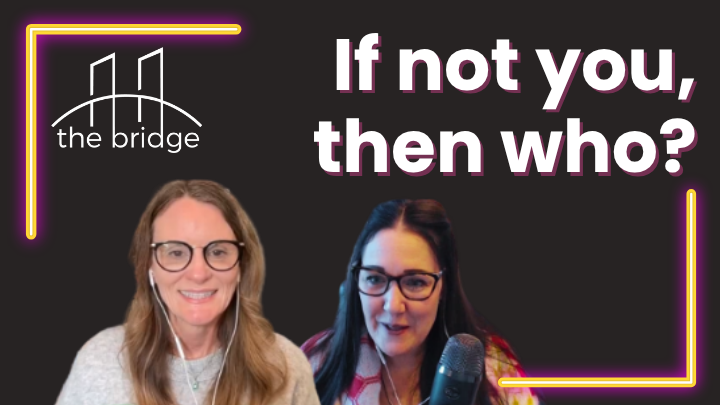3 min read
Creative Assessment Moves That Work (and Don’t Burn You Out)
Cate Tolnai : Jul 27, 2025 4:00:00 AM

THE BRIDGE - July 13, 2025
There was a time when I spent more time building rubrics than my students spent reading them.
It felt like I had to reinvent the wheel every time I wanted students to show what they knew.
Essays. Posters. Presentations. Each required its own set of expectations—and grading them all took forever.
Worst of all? My students often didn’t understand why they were being assessed that way.
It wasn’t until I started combining two simple strategies—structured choice and one-point rubrics—that things finally clicked. Assessment started feeling more like a conversation than a chore.
Students engaged more deeply, and I stopped drowning in paperwork.
Let’s break it down.
Let Them Show You What They Know—Their Way
One of the most effective shifts I ever made was offering choice boards at the end of research projects.
Students could choose how they wanted to present their findings—podcast, slide deck, illustrated one-pager, infographics, even a children’s book version of their topic.
Some even pitched their own ideas. If it hit the target learning goals? I said yes.
Giving students voice in how they demonstrated their learning didn’t mean lowering expectations.
In fact, the opposite happened. Buy-in went up. Pride went up.
The quality of work? Also up.
It turns out, when students feel ownership over how they show what they know, they care a lot more about what they’re showing you.
One Rubric to Rule Them All
Now, offering multiple project options can seem like a grading nightmare—unless you simplify your system. That’s where the single-point rubric saved my sanity.
I first found the idea in a 2015 blog post from Jennifer Gonzalez, and it stuck with me ever since. It’s incredibly simple:
- The middle column states the clear criteria for success.
- The left column lists areas for stretch (what’s missing or needs revision).
- The right column celebrates areas of strength (what exceeded expectations).
Here’s an example of single-point rubric I use to give feedback to my seventh graders on an end-of-unit Infographic Project.

No points. No complicated scales. Just feedback that matters.
And the beauty? You can use the same one-point rubric across multiple creative projects, regardless of format.
Whether a student submitted a podcast or a hand-drawn timeline, they were held to the many of the same expectations around research, organization, accuracy, and clarity.
Use It Early, Use It Often
What made the rubric truly effective wasn’t just how I used it—but when.
I gave students the rubric from day one of the project. We modeled it as a class.
They used it in peer review. They self-assessed before submitting.
By the time I saw the final product, they’d already reflected and revised—and I could focus on giving meaningful, targeted feedback without writing a novel.
The difference between this and my old multi-page, multi-point rubrics? Night and day.
Those took forever to build, confused students, and rarely got revisited. The single-point rubric?
It lived throughout the whole process and helped every student feel like they knew what success looked like.
4 Creative Assessment Moves That Actually Work
By combining structured choice with simplified feedback tools, I found a rhythm that made assessment feel lighter, more meaningful, and—dare I say—enjoyable.
And it wasn’t just about the products or the rubric. It was about designing with intention from the start.
If you’re ready to explore creative assessment without burning out, here are four simple moves that worked for me—and might work for you too:
- ✨ Build a Low-Lift Choice Board: Offer 4–6 formats tied to your learning goals. Keep it simple. Think: one-pagers, podcasts, infographics, or narrated slides.
- 📋 Use a Single-Point Rubric for Everything: Design it once and apply it to all student products. Focus on key criteria and let students help define what strong work looks like.
- 👥 Embed Peer and Self-Assessment: Let students use the rubric for feedback before you do. It builds metacognition and cuts down on revisions after you grade.
- 💬 Celebrate Diverse Demonstrations of Learning: Remember: a powerful message in a podcast is just as valid as a persuasive paragraph. Learning shows up in many forms—honor that.
Final Thought
Creative assessments don’t have to mean extra work.
When we simplify the tools and trust our students, we get to see what they’re truly capable of—and we protect our energy along the way.
Let’s stop grading everything.
Let’s start designing assessments that work—for us and for them.
WEEKLY MENTORSHIP MOCKTAIL RECIPE
The Bold Brew
Zesty, fearless, and unapologetically energizing, this mocktail isn’t here to play it safe.
The Bold Brew brings together the tart punch of chilled hibiscus tea, the kick of fresh ginger, and just the right touch of sweetness.
Topped with shards of ice and a chili-rimmed glass, it’s finished with a twist—literally—of orange peel for that citrus confidence.
Whether you’re powering through a planning session or toasting to a bold new idea, this drink shows up with attitude.


Celebrating Holidays with Inclusion at the Center
THE BRIDGE ISSUE 24 - DECEMBER 14, 2025 For years, I celebrated my Western, Christian tradition of Christmas in my classroom and hallways without...




